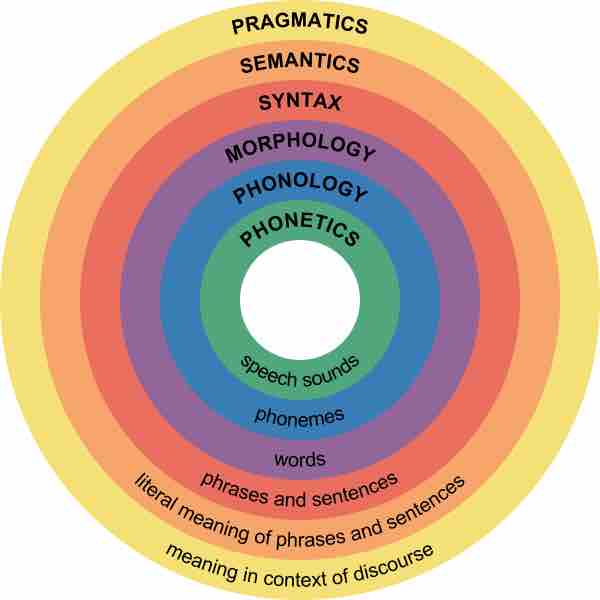Language is the ability to produce and comprehend both spoken and written (and in the case of sign language, signed) words. Understanding how language works means reaching across many branches of psychology—everything from basic neurological functioning to high-level cognitive processing. Language shapes our social interactions and brings order to our lives. Complex language is one of the defining factors that makes us human. Two of the concepts that make language unique are grammar and lexicon.
Grammar
Because all language obeys a set of combinatory rules, we can communicate an infinite number of concepts. While every language has a different set of rules, all languages do obey rules. These rules are known as grammar. Speakers of a language have internalized the rules and exceptions for that language’s grammar. There are rules for every level of language—word formation (for example, native speakers of English have internalized the general rule that -ed is the ending for past-tense verbs, so even when they encounter a brand-new verb, they automatically know how to put it into past tense); phrase formation (for example, knowing that when you use the verb “buy,” it needs a subject and an object; “She buys” is wrong, but “She buys a gift” is okay); and sentence formation.
Lexicon
Every language has its rules, which act as a framework for meaningful communication. But what do people fill that framework up with? The answer is, of course, words. Every human language has a lexicon—the sum total of all of the words in that language. By using grammatical rules to combine words into logical sentences, humans can convey an infinite number of concepts.
Introduction to Linguistics
Language is such a special topic that there is an entire field, linguistics, devoted to its study. Linguistics views language in an objective way, using the scientific method and rigorous research to form theories about how humans acquire, use, and sometimes abuse language. There are a few major branches of linguistics, which it is useful to understand in order to learn about language from a psychological perspective.

Major levels of linguistics
This diagram outlines the various subfields of linguistics, the study of language. These include phonetics, phonology, morphology, syntax, semantics, and pragmatics.
Phonetics and Phonology
Phonetics is the study of individual speech sounds; phonology is the study of phonemes, which are the speech sounds of an individual language. These two heavily overlapping subfields cover all the sounds that humans can make, as well as which sounds make up different languages. A phonologist could answer the question, “Why do BAT and TAB have different meanings even though they are made of the same three sounds, A, B and T?”
Morphology
Morphology is the study of words and other meaningful units of language like suffixes and prefixes. A morphologist would be interested in the relationship between words like “dog" and "dogs” or “walk” and “walking,” and how people figure out the differences between those words.
Syntax
Syntax is the study of sentences and phrases, or how people put words into the right order so that they can communicate meaningfully. All languages have underlying rules of syntax, which, along with morphological rules, make up every language’s grammar. An example of syntax coming into play in language is “Eugene walked the dog” versus “The dog walked Eugene.” The order of words is not arbitrary—in order for the sentence to convey the intended meaning, the words must be in a certain order.
Semantics and Pragmatics
Semantics, most generally, is about the meaning of sentences. Someone who studies semantics is interested in words and what real-world object or concept those words denote, or point to. Pragmatics is an even broader field that studies how the context of a sentence contributes to meaning—for example, someone shouting “Fire!” has a very different meaning if they are in charge of a seven-gun salute than it does if they are sitting in a crowded movie theater.